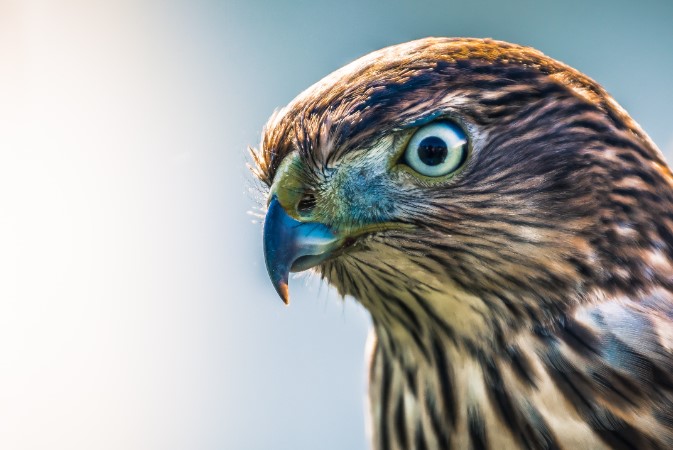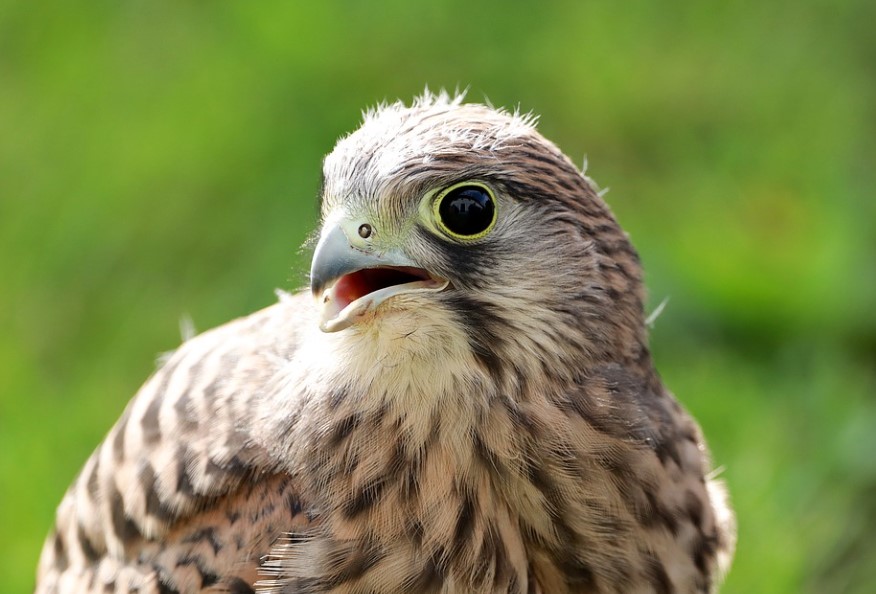Hawk sounds to scare birds and squirrels are a powerful and effective way to keep birds away from your garden. Using hawk sounds can be a game changer. How they work and why they are smart choices for bird and animal control. Hawks screech for three main reasons. During mating season, hawks screech to attract a mate, while in flight to assert their dominance, and during the fledging season when their young are away from the nest.

Hawk Sounds: What Are They?
The sounds of a hawk are recordings of its vocalizations and calls. They are typically used to scare away small animals, such as birds and squirrels, from your outdoor spaces that could cause damage or mess up your landscaping. The presence of hawks is generally regarded as a sign of good luck or a good omen. According to Native American culture, hawks represent good luck in achieving your dreams.
Nature’s balance is maintained through this process, which has been occurring for millions of years. We usually associate large birds of prey with hoarse, screeching sounds made by hawks. Generally, eagles chirp or make piping sounds at short, high pitches. Birds realize immediately that the hawk is a threat, whether they see it or hear its universal hawk alarm call.
Despite not having been taught, they still know what they are doing. Since birth, they have known. Innate or unlearned behavior can be described as such. A smartphone or other device can be used to play the sounds, or portable outdoor speakers can be used. As adults, hawks scream kee-ee-ee-aaarr with a hoarse, hoarse voice. This is usually given while soaring, and it lasts for 2-3 seconds.
A shrill Kree is also made during courtship, sometimes several times at once. The first note is short, while the second note is long: kee-ee. Compared to the female, the male’s call is an octave higher. This call is made both on the nest and in flight throughout the year.
Hawk sound types
Hawk sounds can scare birds and squirrels in a variety of ways. The following are some of the most common:
People usually associate hawk sounds with this screech. Birds and squirrels are easily scared away by this high-pitched, piercing sound.
An imitation of a hawk’s flight, the hawk whistle is softer and more melodic. Using it in your outdoor area can help you create a more natural sound environment.
It sounds like a hawk attacking its prey as it screeches and whistles. Pests that are persistent can often be scared away by it.
Hawks screech for three main reasons. During mating season, hawks screech in order to attract a mate, while in flight to assert their dominance, and during the fledging season when their young are away from the nest.
Synthetic sounds such as high-frequency, ultrasonic sounds are excellent for scattering birds (and perhaps preventing them from returning). By adding frightening visuals like owl statues or scarecrows with shimmering tassels, the strategy becomes even more effective.
As adults, hawks scream kee-ee-ee-aaarr with a hoarse, hoarse voice. This is usually given while soaring, and it lasts for 2-3 seconds. A shrill chwirk is also made during courtship, sometimes several times at once.
The high-pitched whistle is produced by broad-winged hawks every 2–4 seconds. The first note is short, while the second note is long: kee-ee. Compared to the female, the male’s call is an octave higher. This call is made both on the nest and in flight throughout the year.
Related Reading: Northern Harrier Hawk Call and Sound

Hawk Sounds: How Do They Work?
Birds and squirrels respond to hawk sounds by becoming fearful. Often, when these animals hear hawks, they will flee the area, recognizing the sound as a warning signal. Your outdoor space can be protected from pests by playing hawk sounds that give the illusion that a hawk is nearby.
-
The hawk doesn’t like noise, but sometimes he gets used to it, just like a decoy. Various noise sources should be used, and they should be switched up once or twice a week.
-
Radios, wind chimes, and other noises frequently deter hawks. Predators like Hawks are efficient at what they do.
-
Besides catching and eating other animals, they also kill and eat plants. Predation like this is not cruel or mean.
Hawk Sounds’ Effectiveness
There is no guarantee that hawk sounds will work for all birds or squirrels, but they are generally considered to be an extremely effective pest control method. Using hawk sounds is highly advised by pest control professionals to lessen pest activity in homes and gardens. The hawk doesn’t like noise, but sometimes he gets used to it, just like a decoy. Various noise sources should be used, and they should be switched up once or twice a week. Predators like Hawks are efficient at what they do. Besides catching and eating other animals, they also kill and eat plants. Predation like this is not cruel or mean.
How to Use Hawk Sounds to Scare Birds
There are no complicated steps involved in using hawk sounds. The following tips will help you make the most of sounds to scare birds away:
-
Make sure your speakers are placed near bird feeders, fruit trees, and vegetable gardens where you have seen a lot of pest activity.
-
Slowly increase the volume until you see a decrease in bird or squirrel activity. Make sure you keep your neighbors and wildlife safe by not disturbing them.
-
Changing the type of hawk sound you use from time to time will prevent birds and squirrels from becoming accustomed to the same sound.
-
Timer-controlled speakers will save battery life and ensure the sounds are only played when you need them.
-
Synthetic sounds such as high-frequency, ultrasonic sounds are excellent for scattering birds (and perhaps preventing them from returning). By adding frightening visuals like owl statues or scarecrows with shimmering tassels, the strategy becomes even more effective.






